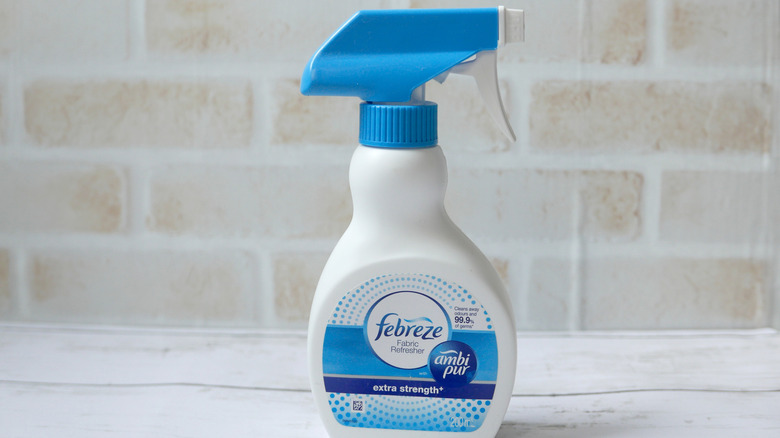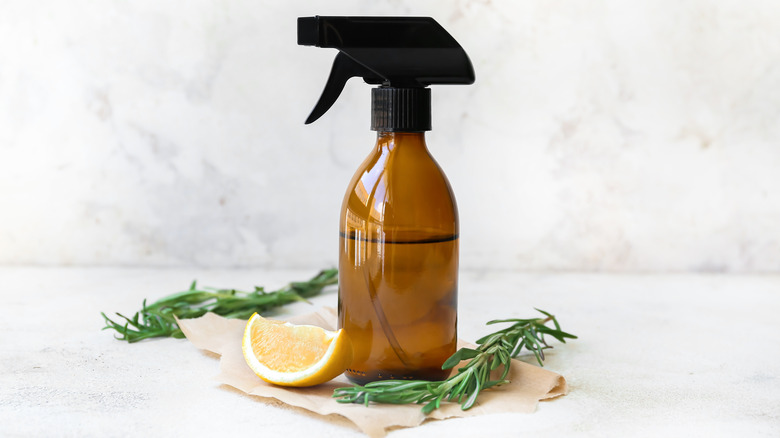Here's What You Can Substitute For Febreze
When trying to cut costs or use more natural products in your home, saying goodbye to store-bought air fresheners like Febreze can be a good place to start. The Filtery explains that many conventional air fresheners include toxins like phthalates, carcinogens, volatile organic compounds, and allergens that consumers aren't aware of. For example, when a product lists "fragrance" as one of its ingredients, it's really an umbrella term that can include over 4,000 different chemicals that the manufacturer isn't legally required to disclose. If you're trying to avoid unnecessary chemicals or just save a few dollars, we've found some recipes that will leave your furniture fresh and clean.
Using fabric softener is a great option for those looking to save money but want a product similar to Febreze. For this recipe, combine 2 teaspoons of baking soda and 1/4 of cup of fabric softener into a spray bottle. Then simply fill it to the top with hot water (via Eco Peanut). Mix it all in the spray bottle and you have your own DIY Febreze. This recipe will give your fabrics a long-lasting, fresh scent. If you notice that it leaves a film over your fabrics, try using less baking soda.
Nontoxic recipes
Nontoxic DIY recipes for Febreze vary depending on whether or not you want a scent. The simplest, least toxic recipe is unscented. It will refresh your fabrics purely using water and vinegar. For this DIY recipe, mix a 50-50 ratio of water and white distilled vinegar in a spray bottle. The vinegar will kill bacteria while the water will dilute any scent from the vinegar, which will disappear once the mixture dries.
If you want a more natural DIY recipe for Febreze that has a fragrance, you can add some essential oils. For this recipe, mix 1 teaspoon of vinegar, 1/4 cup of water, and 20 to 30 drops of essential oil into a spray bottle (via Eco Peanut). This recipe is nontoxic to humans, but pet owners might need to practice extra caution. Certain essential oils are toxic to pets if ingested or applied to their skin. According to Cabbagetown Pet Clinic, some essential oils that are toxic to pets include eucalyptus, tea tree, cinnamon, citrus, peppermint, pine, wintergreen, and ylang-ylang. If you have pets, it may be safest to use the simple vinegar and water recipe.

